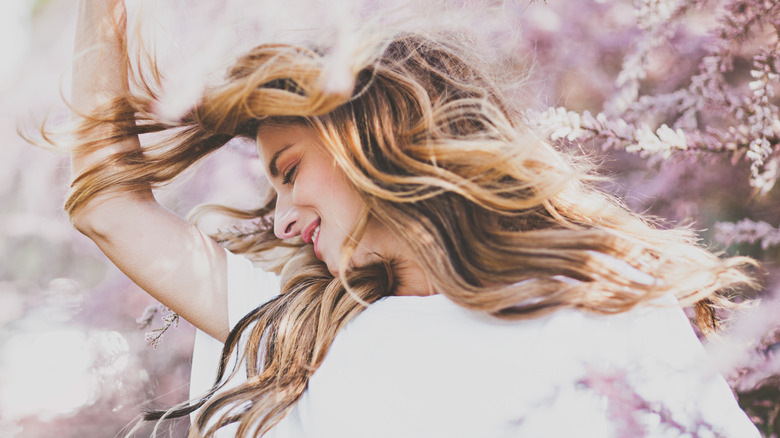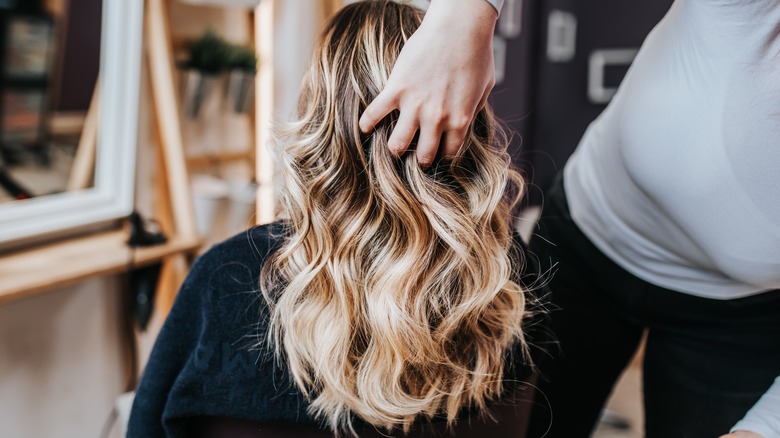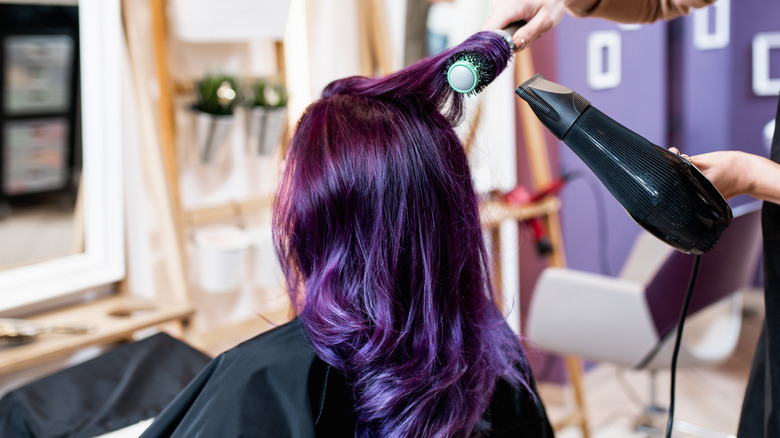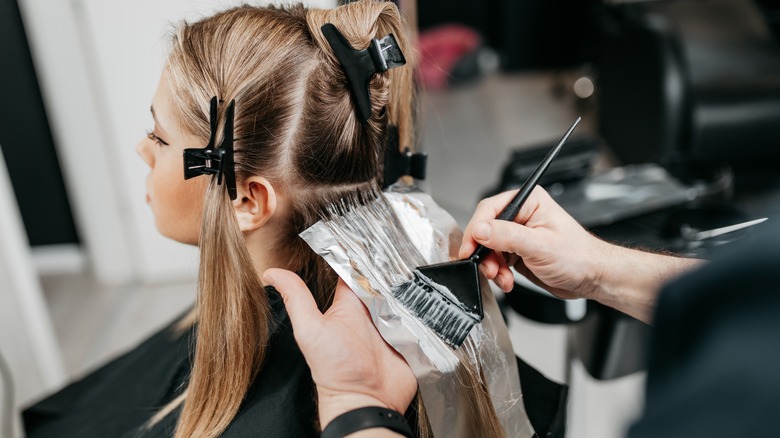Your Guide To Foilyage & Its Differences From Balayage
When it comes to hair coloring, balayage is one of the most requested treatments. Balayage, meaning "sweeping" in French, is a hair-coloring technique that involves hand-painting the dye onto random sections of hair in deft strokes that produce gradient waves of color between the tresses to add dimension to your hair. A balayage treatment also lightens your hair but doesn't have uniform patterns and pronounced stripes as traditional highlights. This low-maintenance hair trend is a great option for individuals looking for a leave-in sweep of lighter shade that integrates flawlessly into their original hair color. However, the jury is still out on whether balayage is the last word in the realm of hair-highlighting techniques.
Another hair-lightening trend that can offer a similar effect as balayage is foilyage, a subtle spin on the balayage technique that's been gaining a cult-like following. The resemblance between foilyage and balayage can be such that they appear similar to the untrained eye: they both boast sweeps of colors on the hair surface and leave the locks with a sun-kissed glow. However, colorists know balayage and foilyage have distinct selling points that can help you achieve different hair goals. Below, check out our comparison between balayage and foilyage to choose the best technique for your mane.
What is foilyage?
Foilyage hair blends two coloring techniques — traditional foils and balayage. Hair foils give your hair a more patterned and consistent look, while the free-flowing balayage effect gives your hair a more natural appearance. While both are great techniques, balayage cannot make your tresses look as light as traditional highlights with foils.
For instance, the balayage technique might not work well for lifting dark hair color. It doesn't involve intensive bleaching and strand separation like the conventional hair highlighting technique, where every strand is coated in bleach and wrapped in foils for effective color lifting. With balayage and traditional foils, you cannot have the best of both worlds in one head. And this is where foilyage comes into play. A foilyage treatment can give you the soft and natural effect of balayage while boosting your hair's color intensity with foils.
During a foilyage treatment, lighter colors are brushed onto the lengths of your hair to create the sweeping balayage effect with naturally blended lines. The colored sections are then coated in sheets of heat-trapping foils to speed up the lighting effect and accentuate the contrast between the new color and your original hair color.
Which is better?
Regarding balayage versus foilyage, it all comes down to what kind of hair look you're going for. Neither is better than the other because they both add depth and a stunning glow to your hair. Both balayage and foilyage are hair arts that entail a good understanding of the symphony of colors and superb technical skills.
Balayage is a great option if you want a smooth blend of shades that adds interest to your overall look. It requires little upkeep because it allows your hair to grow naturally and blend into the new color, so it's a good fit for those who can only afford to do their salon touch-up every three to six months. However, balayage isn't great at lifting color because it's a better option for those with naturally lighter hair.
If you want a more intense do with a conspicuous contrast between the colored hair and your base color at the hair ends, foilyage is the right way to go. The leave-in effect is still there, but the coloration is more striking than balayage, thus more suitable for those with naturally dark hair. However, with foilyage, regrowth might be more noticeable, so you might need more salon touch-ups more often than with balayage.
Foilyage hair care tips
Foilyage involves using foils, which can dry out your hair during the process. A thorough post-foilyage hair care is essential to ensure your hair is always in tip-top shape. To keep your dye job going strong, wash your hair every two to three days with shampoo and conditioner formulated for hair that's been color-treated. Once a week, you can swap your conditioner for an intensive hair mask, which helps guard against lifeless, dull hair.
To keep your hair color vibrant and strengthen your hair strands, use a toning shampoo and a toning conditioner once or twice per week instead of your usual shampoo or when your hair develops brassy streaks. Toning shampoos and conditioners are haircare products containing pigmented formulae such as purple and blue to hydrate your locks and help neutralize unwanted undertones in your colored hair.
If your hair has been suffering from chemical-related damage, such as excessively dry strands and hair breakage, consider using Olaplex, at least once a week or a few days before your next hair salon appointment. An intensive hair care treatment favored by celebrities like Kylie Jenner, Olaplex is said to restore severely damaged hair to life and make your colored hair immune to chemical-related damage.
Before heat styling your colored hair, apply a heat protectant to prevent color fading and boost smoothness. If possible, always air-dry your hair.



